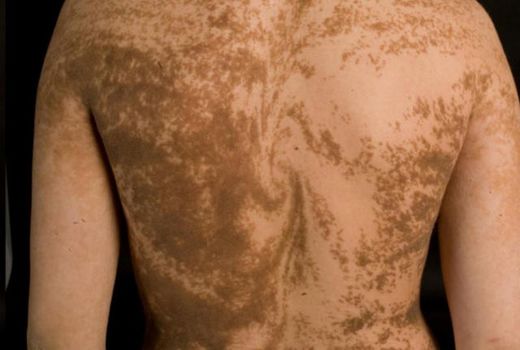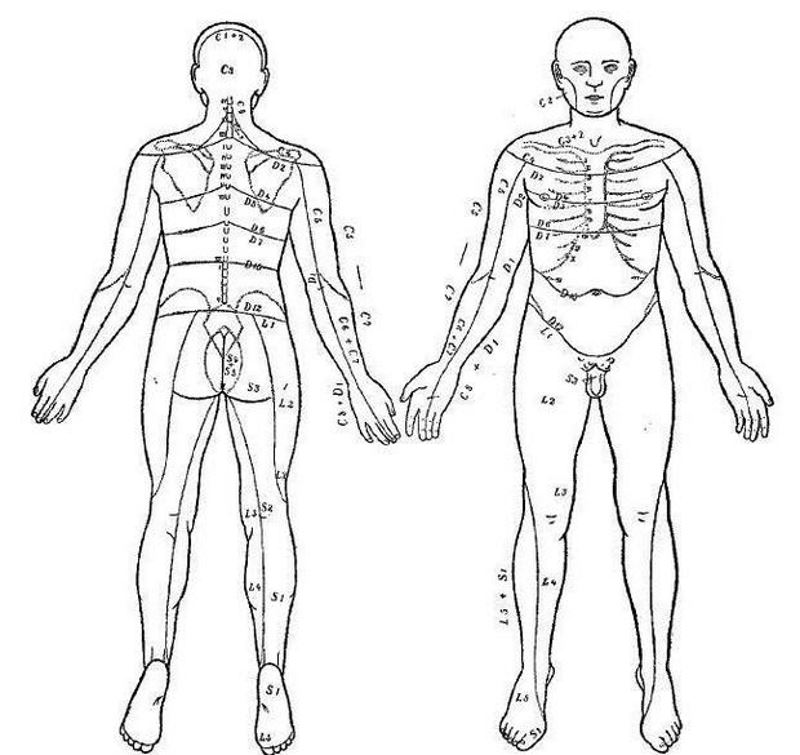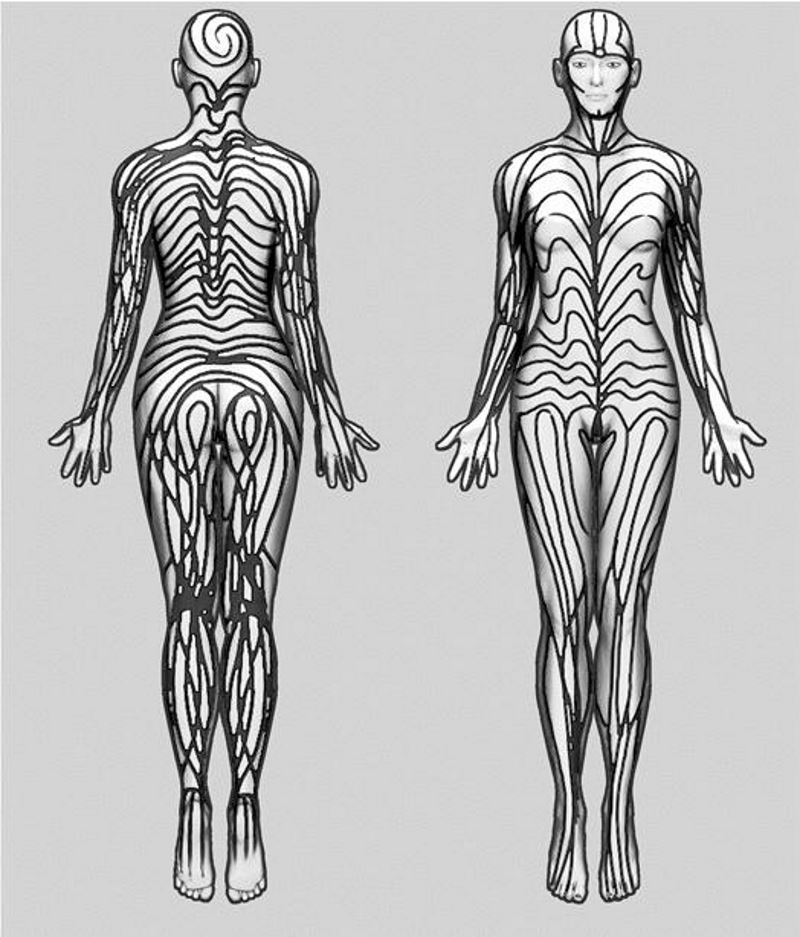
© Anatomic Dead SpaceLined and whorled nevoid hypermelanosis can create beautiful patterns.
Envy the tiger and the zebra no longer. You have stripes of your own.
Human skin is overlaid with what dermatologists call Blaschko's Lines, a pattern of stripes covering the body from head to toe. The stripes run up and down your arms and legs and hug your torso. They wrap around the back of your head like a speed skater's aerodynamic hood and across your face. Or they would, if you could see them.
In the early 1900s, German dermatologist Alfred Blaschko reported that many of his patients' rashes and moles seemed to follow similar formations, almost as though they were tracing invisible lines. But those lines didn't follow nerves or blood vessels. They didn't represent any known body system.
Here is how Blaschko depicted these lines in an early paper:

© Wikimedia CommonsGerman dermatologist Alfred Blaschko's sketch
It turns out these lines are far more extensive than even Blaschko thought—closer to this:

© Davide Brunelli, Med Art
And today we know what they are: cellular relics of our development from a single cell to a fully formed human. Each one of us
started out as a single cell, and then a little glob of cells. As the cells divided, they differentiated. Some became muscles, others bones, still others organs. And some became skin. As those skin cells continued dividing, they expanded and stretched to cover a quickly growing body. One cell line pushed and swirled through another like steamed milk poured into an espresso to make a latte.
Blaschko's lines are the molecular evidence of those swirls.
Most people will never see their own stripes. As Dr. Blaschko noted, there are
dozens of skin conditions that follow these lines, but most of them affect patches of skin or a single body part, not the entire body. Lined and whorled nevoid hypermelanosis can create beautiful patterns.
And then there are the chimeras. Remember the single cell that turned into a glob? From time to time, two of these starter cells will merge and
become a glob together. The glob eventually resolves into a chimera: an animal with two lines of DNA. As the animal's skin develops, the two groups of cells divide and swirl just like non-chimera skin cells. The difference is that the two groups of chimerical cells are slightly different from each other. Behold the chimera cat Venus:

© FacebookChimera cat
via
Venus's Page - Amazing chimera catSometimes, this difference is obvious. More often in humans, though, it's
too subtle to notice with the naked eye, and can only be spotted under UV light.




Reader Comments
to our Newsletter